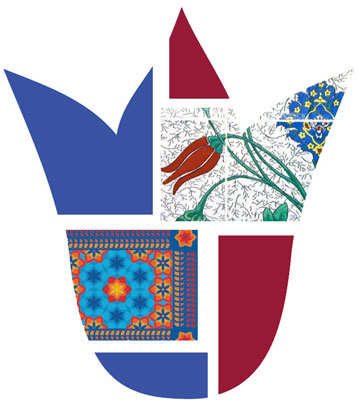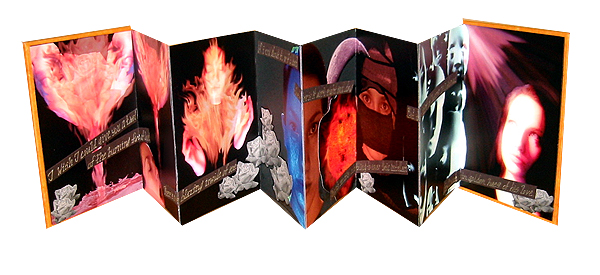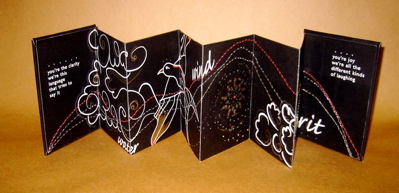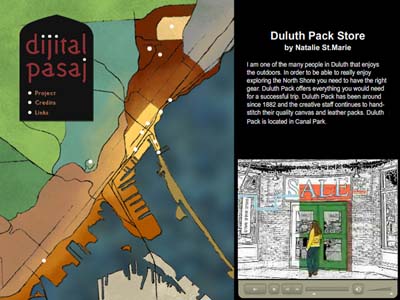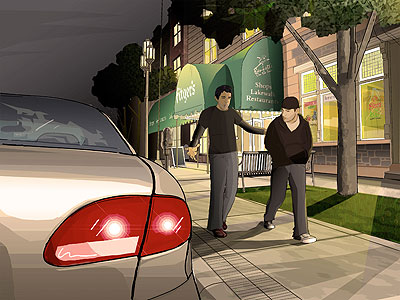from notes by Alison Aune:
The traditional Turkish motifs of the Tulip and Arabesque have had multiple meanings throughout history. For this project, we traced the Tulip, where it was a heraldic motif used throughout the Ottoman Empire, and we followed the Islamic arabesque with its interlacing and continuous vines found in ceramic tiles and carpets. Inspired by these original sources, we created artworks as a way to understand, and celebrate, these ancient patterns of peace.
Links to Symmetry and Pattern Resources on the web >>>
Symmetry and Pattern: The Art of Oriental Carpets
In this online exhibit, the study of symmetry is used to analyze
patterns in Oriental carpets. A joint project of The Textile Museum
and The Math Forum. http://mathforum.org/geometry/rugs/
Kilims are Turkish rugs which come from the Anatolian Plateau in
Central Turkey, also called “Cappadocia” . The rugs have always been
woven entirely by hand, the wool twisted into threads with the use of
small, wooden spindles which are still in use today. Homemade dyes
were used, and many families kept secret their knowledge of which
leaves, flowers, roots or vegetables would yield the most radiant
colors.
Here are some photos of a kilim weaver at work on her own piece. Kilims
are more than interior decorations; they are a part of a history of
both the individual and the culture that created them. By watching the
creative process, we want you to feel a connection to this ancient art.
http://www.kilimwomen.com/
Contact Barbara Sher at barbara@kilimwomen.com if you are interested…
Turkish Carpets & Rugs Portal
http://www.turkhali.org/
http://www.allaboutturkey.com/carpet.htm
http://www.theottomans.org aims to become the leading information portal
regarding the history, military, culture and arts of the Ottoman
Empire that has once dominated a large territory from Egypt to Russia,
from India to Austria. Theottomans.org will be sponsorship oriented
non-commercial web site which will be followed by http://www.theottomans.com,
a platform that will trade Ottoman art, and http://www.theottomans.net, the
future home of the interactive game Constantinople 1453.
http://www.theottomans.org/english/index.asp
ISLAMIC PATTERNS & GEOMETRY
Geometric motifs were popular with Islamic artists and designers in all
parts of the world, for decorating almost every surface, whether walls
or floors, pots or lamps, book covers or textiles. As Islam spread
from nation to nation and region to region, Islamic artists combined
their penchant for geometry with existing traditions, creating a new
and distinctive Islamic art. This art expressed the logic and order
inherent in the Islamic vision of the universe.
http://www.salaam.co.uk/themeofthemonth/march02_index.php?l=3
gallery of images
http://www.salaam.co.uk/themeofthemonth/march02_index.php?l=6
Taprats: Computer-Generated Islamic Star Patterns … Symmetries of
Islamic Geomertical Patterns
http://www.cgl.uwaterloo.ca/~csk/washington/taprats/
Islamic Geometric Patterns
Jay Bonner is a specialist in the design of Islamic geometric patterns.
Some 25 years ago he rediscovered the lost techniques used by
traditional Muslim pattern designers. These techniques provide the
means to recreate even the most complex patterns used by Islamic
cultures of the past, as well as to create original Islamic geometric
patterns that are wholly in keeping with this great tradition.
http://www.bonner-design.com/geometric/
The Nature of Islamic Ornament: Geometric Patterns | Special …
The Nature of Islamic Ornament: Geometric Patterns Islamic Art:
Overview | VegetalPatterns | Calligraphy | Figural Representation …
http://www.metmuseum.org/toah/hd/geom/hd_geom.htm
Islamic Architecture – mosques & palaces.
ISLAMIC ART; CALLIGRAPHY; CARPETS; FLORAL PATTERNS; METALWORK;.
ISLAMICART & ARCHITECTURE … 01 Islamic Patterns : An Analytical &
Cosmological Approach …
http://www.islamicarchitecture.org
Carpets and kilims – All About Turkey
Therefore, Anatolian rugs form a branch of ethnic Turkish rugs. … The
weaver then takes a piece of wool which corresponds with the pattern
and forms a …
http://www.allaboutturkey.com/carpet.htm
The culture of Turkish carpets,culture of carpets,History,parts of …
Turkish carpets devided into some category shown below. … The
earliest patterns of Kulacarpets were either geometrical or composed
of highly stylised …
http://www.bazaarturkey.com/classification.htm
Cinili Kösk Istanbul Photo Gallery by Dick Osseman at pbase.com
It is here that I fell in love with the great colours and beautiful
ornamentation of the best ofTurkish tiles, mosque lamps, plates et
cetera. …
http://www.pbase.com/dosseman/cinili_kosk
SELJUK TILES AND CERAMICS
Turkish tiles and pottery from the 14th to 19th centuries have won …
The cut pieces were placed, according to a design, in a mosaic-like
pattern http://www.byegm.gov.tr/yayinlarimiz/newspot/2001/jan_feb/n6.htm
Iznik Ceramics: Making a Ceramic Tile
Use a timeline of Turkish history to review key dates/ events. Show
examples of objects unique … Tape tracing paper with design, on to
the ceramic tile. …
http://inic.utexas.edu/menic/units/turkey_cyprus/barker/index.htm
http://www.kultur.gov.tr/portal/default_en.asp, Turkish Ministry of
Culture. Video titled, Circle Within the Square
REVIVAL OF ?ZN?K TILES AFTER 300 YEARS
?znik is located on the banks of the lake of the same name in the
province of Bursa in the northwestern part of Anatolia. In antiquity
it lay within the borders of the Bithynian region. One legend says
that the town was established on the return of the God Dionysus from
India. According to another legend, ?znik was colonized by the
soldiers who escorted Alexander the Great (356-323 B.C.) during his
conquests.
http://www.kulturturizm.gov.tr/portal/default_en.asp?belgeno=1598
The ?znik Foundation is composed of three entities: Vocational Center,
Tile- Ceramics Research Center and the Tile and Ceramics Atelier. It
also has a liaison office in
The art of Turkish tiles and ceramics occupies a place of prominence in
the history of Islamic art. Its roots can be traced at least as far
back as the Uighurs of the 8th and 9th centuries.
http://www.ottomanclassics.com/news/news_detail.asp?id=3
It is the first stage in, what is hoped, will become a National
Database of historic tile designs. Initially the web site will
concentrate on providing information about known decorative wall and
floor tile manufacturers and designers, together with images and
information about nineteenth and twentieth century tile designs from
the United Kingdom.
http://www.tessellations.org.uk/
http://www.artsmia.org/world-ceramics/chooser.html
I am particularly struck by the power of the hand painted Turkish tiles
from the 15th to 18th centuries.
http://www.candrews.com/tiles.htm
http://www.candrews.com/carpets.htm
The Art of Turkish Tiles and Ceramics
Tile mosaic is formed by pieces of tile cut to shapes to fit the
pattern … To summarize, the art of Turkish tile and ceramic-making
developed over the …
sanat.bilkent.edu.tr/interactive. m2.org/Handicraft/sitare1.htm
Count On
Islamic patterns as new tiles from old This is a common Islamic
pattern. … Many Islamic patterns are “stellated”. These star shaped
designs are often said …
http://www.mathsyear2000.co.uk/explorer/ morphing/07islamictilings.shtml
Ian Alexander’s Natural Patterns Library
Ian Alexander’s Natural Patterns Library. Ian Alexander’s Natural
Patterns Library. This site consists of many natural images with
visual and textual …
easyweb.easynet.co.uk/~iany/patterns/islamic.htm
Islamic Patterns
Islamic law forbids human (or animal) figures in religious sites, and
so the primary forms of decoration have been floral patterns,
geometric shapes, … personal.carthage.edu/jlochtefeld/
indiajterm/islamicart.html
Islamic Book Design
http://www.islbd.homestead.com/books.html
Description
Our goal is to provide publishers of Islamic books and journals with
graphic designs that are dynamic and contemporary but respectful of
traditional Islamic aesthetic.
Alhambra and General Life
http://www.red2000.com/spain/granada/alhamb.html
Description
The best conserved Arabian palace of its epoch
Traditional Hand-made Islamic Art & Calligraphy
http://www.ayatsandart.com/
Description
We offer a variety of unique and creative Islamic calligraphy on
various types of woods and stained glass. Each piece has an artistic
element of its own possessing its own character to enlighten any home,
office or prayer room.
A Galerry of Islamic Graphics and Art – Free downloads
http://www.geocities.com/savanaabdullah/islamic_wallpapers.htm
Description
Free download graphics, islamic wallpapers, Msn messenger display and
avatars. The images are in good resolution. Alhamdulillah…
New Book from Lund Humphries: ‘Bright Flowers. Textiles and Ceramics
of Central Asia’
http://www.lundhumphries.com/pages/single/11892.html/
Description
‘Bright Flowers’ reveals, in many cases for the first time in
published form, some of the spectacular and colourful embroidered
textiles and glazed ceramics of Central Asia. It provides a
fascinating insight into the material culture and peoples of an area
which is becoming increasingly well- known to outsiders. Price: £32.50,
ISBN: 0 85331 912 X
Amazon.com: Symmetries of Islamic Geometrical Patterns: Books: SJ
Abas,Amer Shaker Salman,Ahmed Moustafa by SJ Abas,Amer Shaker
Salman,Ahmed Moustafa. http://www.amazon.com/exec/obidos/
tg/detail/-/9810217048?v=glance – 118k –
IslamiCity.com – Bazar
150 color and black-and-white drawings of Islamic patterns. … “A
masterly exposition ofIslamic pattern and the underlying cosmological
principles.” …
http://www.islamicity.com/rd.asp?s=03054-2021
Henna patterns based on Tunisian folk art. … Tuareg Patterns ·
Amazigh (Berber) Patterns · Afghani Patterns · Turkish Patterns ·
Persian Patterns
http://www.hennapage.com/henna/what/lineart1/lineart08.html
Baytulhabeeb
http://www.people.umass.edu/mja
Description
Classic Arabic/Islamic calligraphy and Painting
Mecca2Medina
http://www.mecca2medina.com/
Mecca2Medina is a UK based Islamic Hip Hop and Reggae group, the group
produce instrumental and Non-instrumental music. Our aims are to inform
Muslims and Non-Muslims of the beauty of Islam and how it interacts in
our lives daily, we also attempt to address issues that affect our
communities Muslims and Non-Muslims. We are not a political
organisation, and do not belong to any groups, the work we do is
essentially for Dawah purposes, and also for the creation of positive
entertainment for our young Muslim brothers and sisters distracted by
mainstream media.
Meem Music
http://www.meem.info/
Description
Producers and distributors of fine Islamic audio. Record label for some
of the freshest Nasheed artists in the West.
soundofislam
URL
http://www.soundofislam.co.uk/
Description
islamic multimedia
Turkish Music, Turkish Food, Turkish Movies, Turkish Grocery …
More than 30000 Turkish books, 5000 Turkish music titles, Turkish food
items … less oriental in colour and pattern as the distance from
Turkey increases. …
http://www.tulumba.com/
TULIPS
history
http://bell.lib.umn.edu/Products/tulips.html
The Tulip
According to Persian legend, the first tulips sprang up from the drops
of blood shed by a lover and for a long time the tulip was the symbol
of avowed love. …
http://www.sfheart.com/tulip.html
The story of the tulip
The tulip, symbol of Holland. But did you know that this flower has its
roots in the mountains of Kazakhstan? Even in Holland most people do
not know that …
http://www.wild-natures.com/tulip.html
The Holland Ring – Tulips
For the rich and the famous the tulip was a status symbol. The
popularity of the tulip soared and soon the demand skyrocketed. In
1636, people started using …
http://www.thehollandring.com/tulpen.shtml
tulip: Definition and Much More From Answers.com
The tulip is the national flower of Iran and Turkey, and tulip motifs
feature prominently in Persian and Turkish folk arts. The European name
for the flower …
http://www.answers.com/topic/tulip
Iran – Flag
… the national emblem (a stylized representation of the word Allah in
the shape of a tulip, asymbol of martyrdom) in red is centered in the
white band; …
http://www.classbrain.com/art_cr/publish/iran_flag.shtml
The Tulip
Title: The Tulip: A Symbol of Two Nations Author: exhibition catalogue
Subject: 1993 Istanbul exhibition catalogue tracing both the Dutch and
Turkish …
hollychase.igc.org/thetulip.html
Symbolism of Flowers or, the Language of Flowers
Phlox – Symbol of sweet dreams and implies a proposal of marriage. …
energy; Tulip – in Persia the tulip is the symbol of love; Violet –
Modesty …
http://www.santacruzpl.org/readyref/files/d-f/flowsym.shtm
Also in the Turkish history Tulip played an interesting role. The
period in our history between 1718-1730 is called as the “Tulip Era”,
under the reign of sultan Ahmed III. This period is also expressed as
an era of peace and enjoyment. Tulips became and important style of
life within the arts, folklore and the daily life. Many embroidery and
textile clothing handmade bywoman, carpets, tiles, miniatures etc. had
tulip designs or shapes, large tulip gardens around the Golden Horn
were frequented by upscale people, and so on. Also, the first printing
house was founded by Ibrahim Müteferrika in Istanbul. The Tulip Era
was brought to an end after the Patrona Halil revolt in 1730, ending
with the de-thronation of the Sultan.
http://www.allaboutturkey.com/tulip.htm
